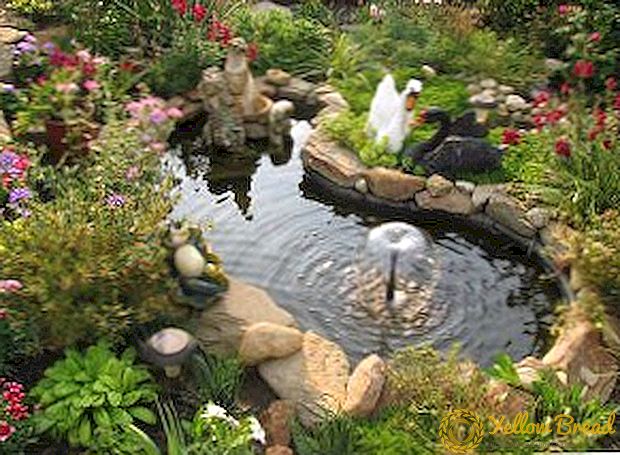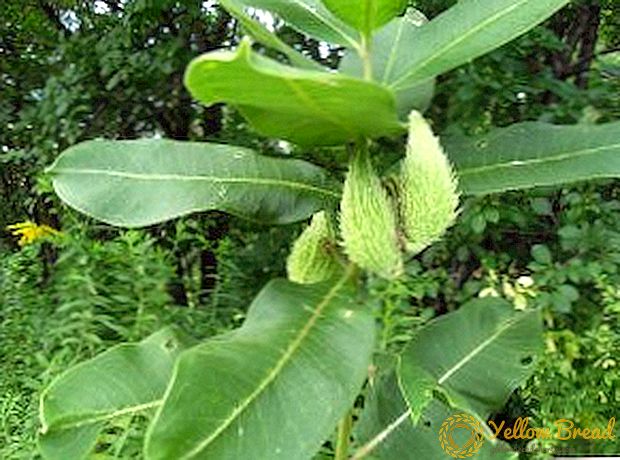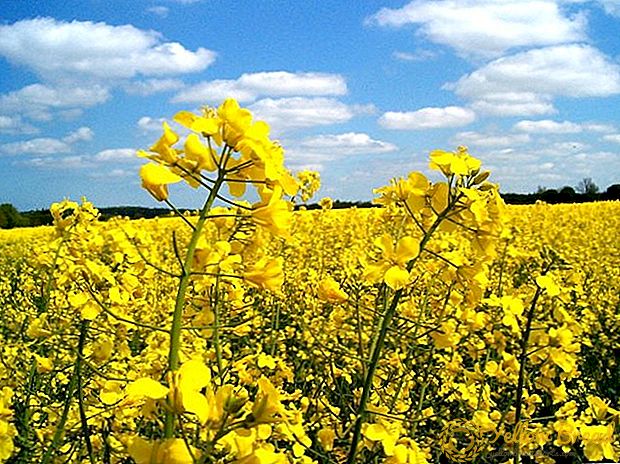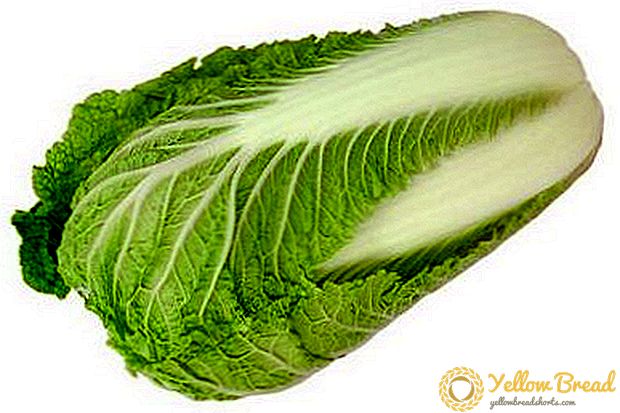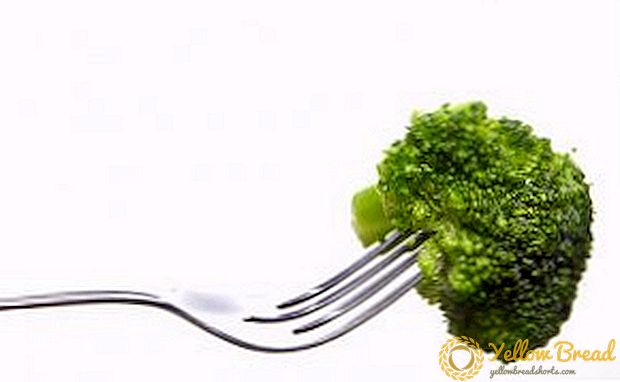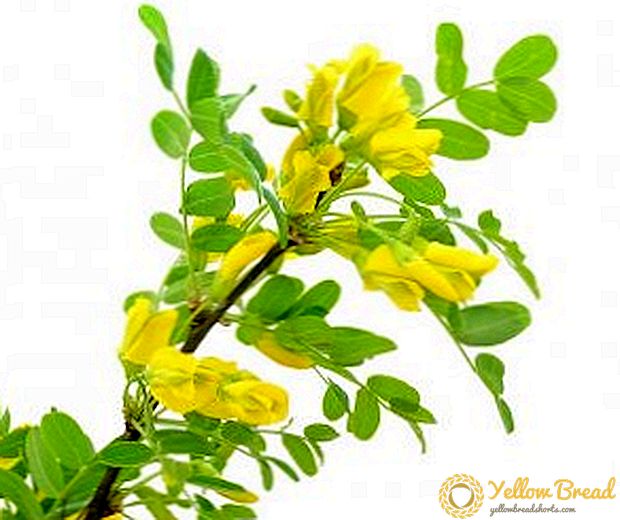 The small foliage and yellow flowers of this plant are not at all impressive. However, gardeners, like a magnet, attracts its intoxicating aroma and practicality. In the garden it will take root on any site, cover even the most inconspicuous places and protect the territory. But the main advantage of a small shrub is its healing properties and early honey plant. Want to get such a culture? Then to you here: we will tell all about yellow acacia, its cultivation and we will open secrets how to get benefit for the organism from an unpretentious tree.
The small foliage and yellow flowers of this plant are not at all impressive. However, gardeners, like a magnet, attracts its intoxicating aroma and practicality. In the garden it will take root on any site, cover even the most inconspicuous places and protect the territory. But the main advantage of a small shrub is its healing properties and early honey plant. Want to get such a culture? Then to you here: we will tell all about yellow acacia, its cultivation and we will open secrets how to get benefit for the organism from an unpretentious tree.
- Yellow acacia: characteristic
- Dates and choice of place for landing
- Planting yellow acacia seedlings
- What care does yellow acacia need?
- Pruning Acacia
- Use in landscape design and hedge
- Yellow acacia - honey plant
Yellow acacia: characteristic
In botanical literature yellow acacia also called "Caragana treelike", and in the description characterize as a low multi-stemmed deciduous shrub belonging to the genus of legumes. The average height of the culture is about 2 - 4 m, and its width is up to 2.5 m.
The trunk is covered with smooth gray-green bark, thin shoots, branchy. Leaves up to 58 cm long, paired-pinnate, are, as a rule, 4-7 pairs of small leaves 10 mm long and 4 mm wide. Each of them resembles an oblong glossy, slightly pubescent oval of bright green color. Stipules are prickly. Often they crumble, rarely lumber.
 In May and early June, numerous fragrant yellow flowers with a length of up to 20 mm appear. They are collected in several pieces in inflorescences. Individually, each axillary flower is tubular-bell-shaped with tiny teeth and five petals. After flowering in their place grow fruits, which are small linear-cylindrical beans up to 7 mm in length. In each of 5 - 8 seeds that ripen in July.
In May and early June, numerous fragrant yellow flowers with a length of up to 20 mm appear. They are collected in several pieces in inflorescences. Individually, each axillary flower is tubular-bell-shaped with tiny teeth and five petals. After flowering in their place grow fruits, which are small linear-cylindrical beans up to 7 mm in length. In each of 5 - 8 seeds that ripen in July.
Siberia, Mongolia, Kazakhstan, and North China are native to perennials.They also know about the plant in the United States of America; Eurasian emigrants brought it there as a source of food during their trip. In some states, Caragana is mistakenly considered an invasive species, that is, prone to disrupt the nitrogen cycle in the soil. In fact, the acacia has such properties, and the yellow type is completely safe for ecosystems.
In the conditions of the Ukrainian climate, yellow acacia is very enduring and almost unpretentious in care and cultivation. Culture does not suffer from the attacks of harmful insects and diseases. It easily tolerates frosts and droughts, as well as unfavorable areas with poor soil and drafts. She was loved by many gardeners with her unpretentiousness and healing.

Dates and choice of place for landing
Acacia, or, as it is also called, Caragana endures a variety of soils, but prefers good drainage and the absence of nearby groundwater. Ideal for her would be a sun-saturated area with fresh sandy soil. For agricultural purposes, shrubs are often used to combat soil erosion, neutralize them, enrich with nitrogen, and also as a dense, low barrier in multi-row plantings.
Culture easily tolerates strong winds and even windbreaks, it suffers salt marshes, extreme cold. However, it will develop poorly in heavy wet soils. Given these properties when planting yellow acacia, determine a favorable place for you. It may make sense to close other cultures that love penumbra with shrubs from the sun, or create a hedge from it.
The plant propagates by seeds and cuttings when dividing the root.
 The best period for the seed method is spring, when the sprouted seedlings are transplanted into separate pots, and after a month and a half they are determined for a permanent place in the open ground.
The best period for the seed method is spring, when the sprouted seedlings are transplanted into separate pots, and after a month and a half they are determined for a permanent place in the open ground.
More effective method of grafting. It can be implemented in the spring. Seedlings will have time to form a strong root system and branches, which will allow you to safely winter. Begin planting in late April - early May, when the soil has already moved away from the cold and warmed enough for acacia.The hassle delivers the constant need for abundant watering of the seedling to save its roots from drying out. In addition, before planting in the spring, the roots also need moisture. They need to be left for a day in a container with water, and during landing they should be watered until the earth ceases to absorb moisture.
Autumn plantings enable the young sapling of acacia yellow to adapt before winter, grow well into the soil, develop and strengthen the roots.
 With the arrival of spring, such a tree immediately grows and develops rapidly. In addition, the Caragana is considered a fast-growing culture.
With the arrival of spring, such a tree immediately grows and develops rapidly. In addition, the Caragana is considered a fast-growing culture.
Most often, the process begins in early October, so that the roots have time to get accustomed to frost. It is important to take into account the climatic features of the region.
Disembarkation should occur a maximum of two weeks before the first frost. Autumn increases the risk of root rot.A young Karagana can die in cold soil.
Planting yellow acacia seedlings
Most owners of household plots understand how difficult it is to grow acacia from seeds, therefore, they prefer planting seedlings.
In spring or autumn, the root cuttings are cut off with a sharp shovel from the mother bush and immediately start planting. If there are several plants, a distance of half a meter is observed between them.
To begin with, digging holes at the level of 50 cm. About 2 kg of gravel, claydite or brick dust are laid on the bottom of the pit, sprinkled with soil on top. Young trees must be fed with complex mineral fertilizer or compost, which is not necessary for old specimens.
 Planting material is lowered into the pit so that when instilled the root neck (the place of transition of the trunk to the root) a few centimeters deepened. Then straighten the rhizome and water the tree, sprinkle it on top with earth and tamp it. A sapling during planting should be thoroughly shaken to fill the voids between the roots. The soil is well trampled, otherwise the roots will dry out and the bush will not take root.At the end of planting, the soil in the tree trunks is mulched with a 5-cm layer of hay, pine needles, sawdust or bark.
Planting material is lowered into the pit so that when instilled the root neck (the place of transition of the trunk to the root) a few centimeters deepened. Then straighten the rhizome and water the tree, sprinkle it on top with earth and tamp it. A sapling during planting should be thoroughly shaken to fill the voids between the roots. The soil is well trampled, otherwise the roots will dry out and the bush will not take root.At the end of planting, the soil in the tree trunks is mulched with a 5-cm layer of hay, pine needles, sawdust or bark.
What care does yellow acacia need?
Despite the adaptability of acacia yellow to adverse conditions, resistance to disease, young plants still need basic care.
In the first year of life, bushes need a humid and warm climate. Caring gardeners will not test the plant for strength, exhausting by extreme conditions. For the full development of the Karagany, like all plants, are needed:
- Illumination is a sun-drenched culture, with abundant ultraviolet does not get burned.
- Soil moisture - yellow acacia needs watering no more than three times a week. Hardy shrubs will not forgive you soured swamp substrate. It is easier for him to survive a drought than rotting roots. The soil should be well loosened, weed free and moderately wet. Every mature bush needs about 12 liters of water.Focus on the degree of evaporation of moisture and weather conditions.
- Top dressing is relevant only for young plants in the early stages of development. The optimal period is March - August, the manipulation is done twice a week. As a fertilizer for acacia use a solution of chicken manure or mullein in the ratio of 1:50.
- Formative pruning - begins in the second year of life. Otherwise, your shrub will turn into a huge tree, like white acacia.

Pruning Acacia
Perhaps this is the only serious demand grateful shrubs. And to implement it in your best interest, since the Caragana tree is growing very strongly. It is better to cut branches in the spring, after the flowering of acacia. In order not to stiffen the crown, it is generally removed at the second-year bush, leaving three buds on the trunk. This procedure contributes to the development of the root system. In the future, the plant takes the form of a bush.
Although, if desired, it can be cultivated as a small tree. Culture very well lends itself to the skillful hands of gardeners and soon, under the pruning blades, it is transformed into various shapes. In subsequent years, when it is time to trim the yellow acacia, the main focus is on removing dry and damaged branches.
Use in landscape design and hedge
Karagan can be seen not only in private gardens: the plant is cultivated throughout the country in parks, protective forest belts, to protect the soil from weeds and the settlement of sand, to strengthen embankments of slopes. Vines are used by folk artisans to weave baskets and shields.
 The perennial, although famous for its strong branching, does not suppress the growing number of ornamental crops. The plant accumulates nitrogen, enriching the poor lands.Professional gardeners with the help of Caragana create whole compositions.
The perennial, although famous for its strong branching, does not suppress the growing number of ornamental crops. The plant accumulates nitrogen, enriching the poor lands.Professional gardeners with the help of Caragana create whole compositions.
The flowering hedge of acacia looks spectacular. Even a beginner will be able to form it on his site. It is enough to plant bushes in a staggered manner at a distance of 25 cm in autumn and make the first pruning in time. In the park design, the plant is used for decorative gardening alleys.
Yellow acacia - honey plant
At home, acacia has long been known as a food product and a wonderful honey plant. Contemporaries use this generous gift of the plant and plant it around the perimeter of the apiary. Beekeepers call the shrub a late spring honey plant and are valued for the fact that flowers appear at an intermediate stage when most of the crops have faded, and the blooming of summer plants is still far away.
 When the acacia blooms, the bees actively flock to the fragrant inflorescences. The bribes are small. On average, from 1 hectare a hive collects about 300 kg of honey. Its characteristic features are transparent clear yellow color, delicate taste and incomparable lively aroma. The product can last a year and not crystallize. If in other types of honey, this fact indicates a fake and poor quality, then in this case, all is explained by a large amount of fructose (40.35%) and glucose (35.98%).
When the acacia blooms, the bees actively flock to the fragrant inflorescences. The bribes are small. On average, from 1 hectare a hive collects about 300 kg of honey. Its characteristic features are transparent clear yellow color, delicate taste and incomparable lively aroma. The product can last a year and not crystallize. If in other types of honey, this fact indicates a fake and poor quality, then in this case, all is explained by a large amount of fructose (40.35%) and glucose (35.98%).
Acacia honey is valued more than lime, and is considered a high-grade species. In medical practice, it is recommended for disorders of the nervous system, emotional exhaustion, vision problems, kidney, biliary and intestinal diseases, as well as for children and diabetic food.
It is proved that honey from yellow acacia does not cause allergic reactions, strengthens the immune system. His healing magic has led more than one generation of scientists to explore the most complex biochemical reactions in the human body in order to understand how a bee product actually relieves patients from ailments. But so far the mystery has not been disclosed, but the fact remains.

